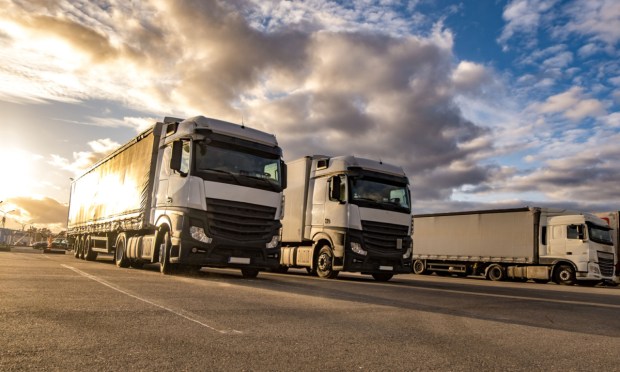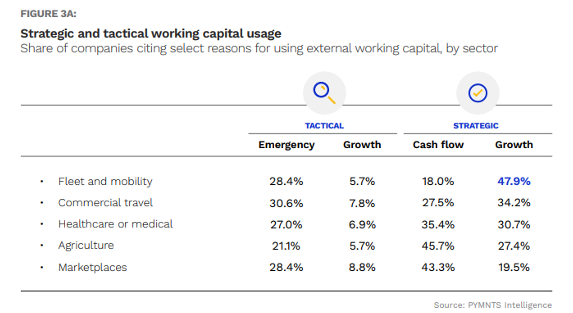Virtual Cards in Hand, Fleet and Mobility Firms Seek to Modernize Working Capital Management

Fleet and mobility companies are turning the corner — a bit of pun intended — in modernizing payments, and the ways in which they leverage working capital to grow their operations.
That same prudent working capital management can help fleet companies grapple with the vagaries of unpredictable external forces, where macro headwinds or tailwinds present new, unforeseen opportunities and challenges that need to be addressed with speed. Throughout it all, even as loads are picked up and dropped off, repairs are a constant fact of life, and paying for fuel is a daily part of operations, truck by truck … capital needs to be monitored, adjusted and optimized.
In the 2023-2024 Growth Corporates Working Capital Index, PYMNTS Intelligence, in collaboration with Visa, found that the industry shows the relatively highest deployment of working capital for growth purposes — which indicates investment in vehicles, back-office operations and an upgrading of systems to keep track with the constantly shifting delivery/logistics landscape.

And, with a bit more granular insight, the data show that fleet and mobility firms have been using commercial cards, and specifically, virtual cards, more than other industries. We found that 19% of these companies do so, which far outpaces the 5% of the overall sample of industries, which includes healthcare and marketplace companies, among others.
In an interview last month with Karen Webster, Helen Jones, executive director of Visa Commercial Solutions Europe, said that fleet and mobility “is the one the most active in terms of working capital” and added that “card acceptance in this space is probably at an all-time high and just continues to grow.”
Pockets of Innovation
A spate of coverage over the past several months in our own digital pages shines a spotlight on how fleet management is using technology to smooth speed bumps.
In one example, Jordan Wagner, vice president and general manager at Torque by Ryder, told PYMNTS that the greenfield opportunity is a significant one for trucking:
“We still have to have a lockbox for checks, you still have people out there doing things on carbon copy paper and writing it down, and the thing about payments is everyone still wants to do it every way. We’re really trying to get away from phone calls and checks, but the reality is that in this space there are still plenty of people who want to do it the old-fashioned way,” Wagner said. “The old channels are still very, very prevalent.”
And as noted here, in June, BP began its digital payments solution launch, easing and speeding the process of paying for fuel. In terms of mechanics, the app-based solution allows drivers to refuel their trucks by confirming the fueling site through the app, unlocking the pump and refueling. The app logs the transaction and pays for the fuel.
Connectivity remains a key driver of improving operations (which would include payments and virtual cards, which can have spend limits), in the months and years ahead. Joint research from PYMNTS and American Express has shown that while 16% of fleet operators reported that at least half of their fleets are connected, approximately one-third of corporate fleets have connectivity for 5% or less of their entire fleets. This is expected to change dramatically by 2025, when it is estimated that 48% of all fleets will be connected — across vehicle tracking, maintenance and payments functions.

